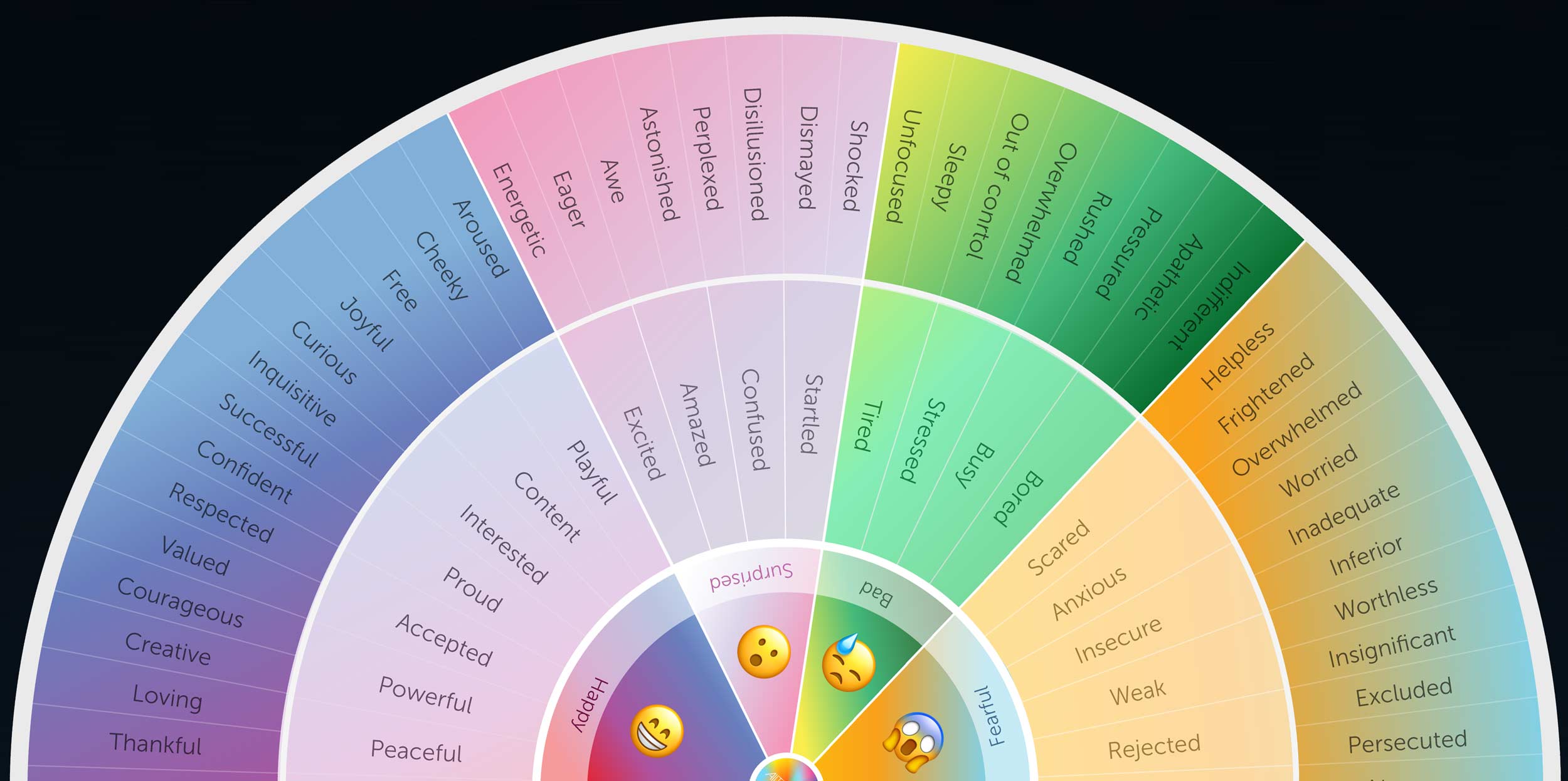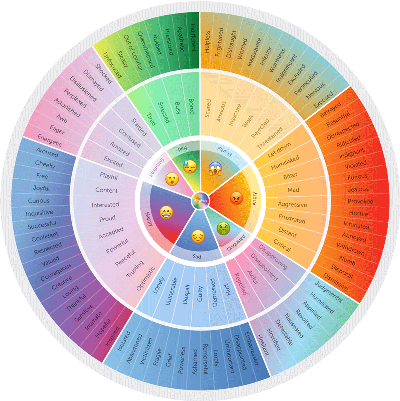
The Emotion Wheel
A powerful tool you can use to identify emotions, cultivate self-awareness and boost your emotional intelligence (EQ).
What is an Emotion Wheel? Who needs a Wheel of Emotion? When to use it? How to use it? Why is the Emotion Wheel useful?
Try our emotion wheel app
What is an Emotion Wheel?
It is a proven tool you can use to identify how you feel, which is the first step in regulating your emotions. Psychologists and therapists rely on it to help patients better understand their feelings, especially when it may be challenging to do so.
Our version is a variation of Pastor Geoffrey Roberts' I Feel - Emotional Word Wheel, geared towards people who have limited emotional vocabulary. His wheel have roots in Gloria Willcox's Feeling Wheel.
Robert Plutchik's evolutionary theory of emotions influences most emotion wheels. Plutchki's "wheel of emotions" is more geared towards navigating various emotional intensities, whereas ours focuses on just labeling them.
Who needs a Wheel of Emotion?
Anyone interested in improving the way they experience and communicate their emotions.
Specific examples would be:
- Develop Emotional Intelligence (EQ)
- When working with a Psychologist or Therapist
When to use it?
It's most useful when you feel emotionally overwhelmed, or you find your emotions hard to verbalize.
If you're working with a therapist, follow their instructions; some may recommend using it when you wake up and go to bed. If you're working on emotional intelligence, the more you track, the more beneficial the process is.
How to use it?
Go through the list of emotions the wheel provides doing a quick check-in to see if that feeling is present within you at that time. If it is, tap it and repeat the label in your head; if possible, say it out loud.
Why is the Emotion Wheel useful?
There are several benefits to using a wheel of emotion, but we aim for the three core ones:
- Activate your brain's executive function
- Increase your emotional intelligence
- Maintain a record of your feelings
Activate
When you feel anxious, the fear center of the brain (amygdala), gets triggered; this is your fight-or-flight response. At the same time, the part responsible for problem-solving and decision-making (prefrontal cortex), become less active. This "Amygdala Highjack" leads to poor behavior and undesirable consequences.
Using the wheel, lessens your fight-or-flight response, by activating your prefrontal cortex through the labeling of your emotions. Helping you regulate how you feel and manage your behavior.
Increase
Being emotionally self-aware is the foundation of Emotional Intelligence (EQ). You cultivate this awareness every time you identify emotions using the wheel, effectively increasing it.
Maintain
Keeping a record of how you feel over time, is useful to spot long-term emotional trends and understand the time you spend experiencing certain emotions over others.
Where to use it?
Anywhere! Whether using a printed version (emotion wheel pdf) or this online version, use it whenever you need it or feel it!

